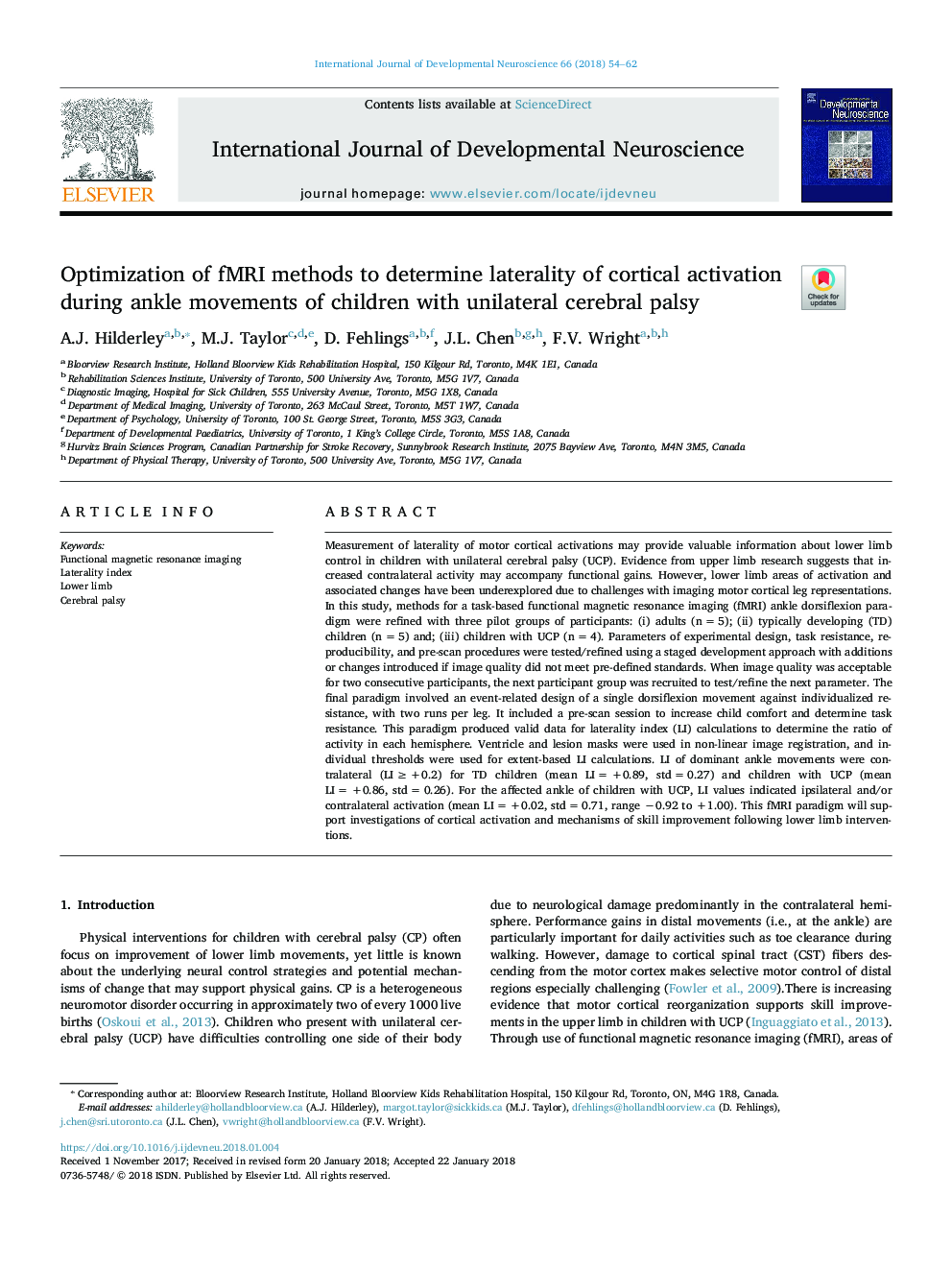| Article ID | Journal | Published Year | Pages | File Type |
|---|---|---|---|---|
| 8626108 | International Journal of Developmental Neuroscience | 2018 | 9 Pages |
Abstract
Measurement of laterality of motor cortical activations may provide valuable information about lower limb control in children with unilateral cerebral palsy (UCP). Evidence from upper limb research suggests that increased contralateral activity may accompany functional gains. However, lower limb areas of activation and associated changes have been underexplored due to challenges with imaging motor cortical leg representations. In this study, methods for a task-based functional magnetic resonance imaging (fMRI) ankle dorsiflexion paradigm were refined with three pilot groups of participants: (i) adults (nâ¯=â¯5); (ii) typically developing (TD) children (nâ¯=â¯5) and; (iii) children with UCP (nâ¯=â¯4). Parameters of experimental design, task resistance, reproducibility, and pre-scan procedures were tested/refined using a staged development approach with additions or changes introduced if image quality did not meet pre-defined standards. When image quality was acceptable for two consecutive participants, the next participant group was recruited to test/refine the next parameter. The final paradigm involved an event-related design of a single dorsiflexion movement against individualized resistance, with two runs per leg. It included a pre-scan session to increase child comfort and determine task resistance. This paradigm produced valid data for laterality index (LI) calculations to determine the ratio of activity in each hemisphere. Ventricle and lesion masks were used in non-linear image registration, and individual thresholds were used for extent-based LI calculations. LI of dominant ankle movements were contralateral (LIâ¯â¥â¯+0.2) for TD children (mean LIâ¯=â¯+0.89, stdâ¯=â¯0.27) and children with UCP (mean LIâ¯=â¯+0.86, stdâ¯=â¯0.26). For the affected ankle of children with UCP, LI values indicated ipsilateral and/or contralateral activation (mean LIâ¯=â¯+0.02, stdâ¯=â¯0.71, range â0.92 to +1.00). This fMRI paradigm will support investigations of cortical activation and mechanisms of skill improvement following lower limb interventions.
Related Topics
Life Sciences
Biochemistry, Genetics and Molecular Biology
Developmental Biology
Authors
A.J. Hilderley, M.J. Taylor, D. Fehlings, J.L. Chen, F.V. Wright,
